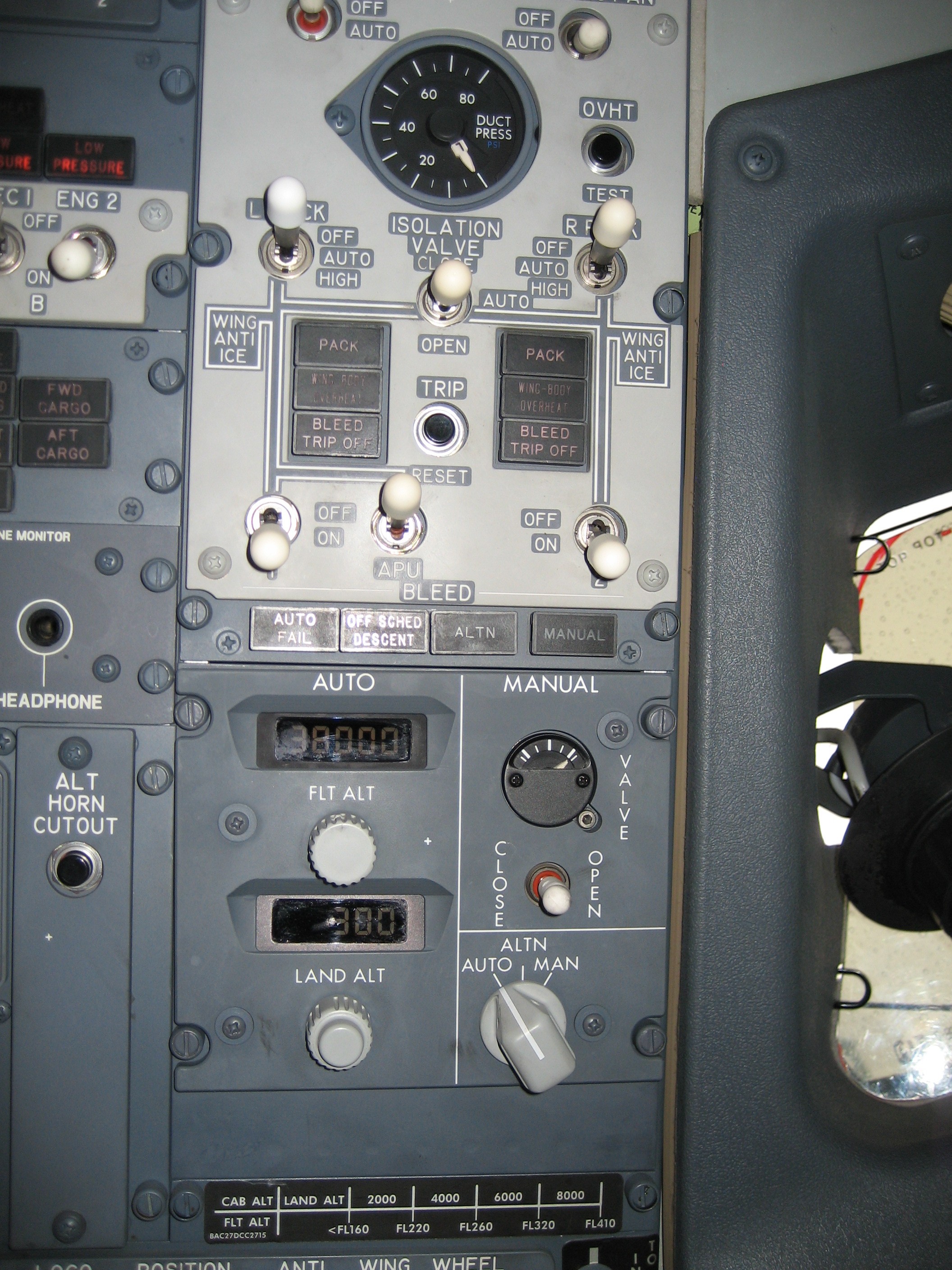|
NAL Saras
The NAL Saras (Sanskrit: " Crane") is the first Indian multi-purpose civilian aircraft in the light transport aircraft category as designed by the National Aerospace Laboratories (NAL). In January 2016, it was reported that the project had been cancelled. But in February 2017, the project was revived. In February 2019, India's finance ministry approved for the production of the airliner. Development In the mid-1980s, the Research Council recommended that the NAL should study the civil aviation requirements of India and recommended ways of establishing a viable civil aviation industry. It further recommended that the NAL should carry out a formal techno-economical feasibility study of a multi role light transport aircraft (LTA – renamed SARAS in October 1993). The feasibility study (November 1989) showed that there was a significant demand for a 9–14 seat multi-role LTA in the country and estimated a market potential of about 250–350 aircraft in the next 10 years. NAL ... [...More Info...] [...Related Items...] OR: [Wikipedia] [Google] [Baidu] |
WikiProject Aircraft
A WikiProject, or Wikiproject, is a Wikimedia movement affinity group for contributors with shared goals. WikiProjects are prevalent within the largest wiki, Wikipedia, and exist to varying degrees within sister projects such as Wiktionary, Wikiquote, Wikidata, and Wikisource. They also exist in different languages, and translation of articles is a form of their collaboration. During the COVID-19 pandemic, CBS News noted the role of Wikipedia's WikiProject Medicine in maintaining the accuracy of articles related to the disease. Another WikiProject that has drawn attention is WikiProject Women Scientists, which was profiled by '' Smithsonian'' for its efforts to improve coverage of women scientists which the profile noted had "helped increase the number of female scientists on Wikipedia from around 1,600 to over 5,000". On Wikipedia Some Wikipedia WikiProjects are substantial enough to engage in cooperative activities with outside organizations relevant to the field at issue. For e ... [...More Info...] [...Related Items...] OR: [Wikipedia] [Google] [Baidu] |
Bangalore
Bangalore (), officially Bengaluru (), is the capital and largest city of the Indian state of Karnataka. It has a population of more than and a metropolitan population of around , making it the third most populous city and fifth most populous urban agglomeration in India, as well as the largest city in South India, and the 27th largest city in the world. Located on the Deccan Plateau, at a height of over above sea level, Bangalore has a pleasant climate throughout the year, with its parks and green spaces earning it the reputation as the "Garden City" of India. Its elevation is the highest among the major cities of India. An aerospace, heavy engineering and electronics hub since the 1960s, Bangalore is widely regarded as the "Silicon Valley of India" because of its role as the nation's leading information technology (IT) exporter.——— In the Ease of Living Index 2020 (published by the Ministry of Housing and Urban Affairs), it was ranked the most livable Indian ... [...More Info...] [...Related Items...] OR: [Wikipedia] [Google] [Baidu] |
Defence Research And Development Organisation
The Defence Research and Development Organisation (DRDO) (IAST: ''Raksā Anūsandhān Evam Vikās Sangaṭhan'') is the premier agency under the Department of Defence Research and Development in Ministry of Defence of the Government of India, charged with the military's research and development, headquartered in Delhi, India. It was formed in 1958 by the merger of the Technical Development Establishment and the Directorate of Technical Development and Production of the Indian Ordnance Factories with the Defence Science Organisation. Subsequently, Defence Research & Development Service (DRDS) was constituted in 1979 as a service of Group 'A' Officers / Scientists directly under the administrative control of Ministry of Defence. With a network of 52 laboratories that are engaged in developing defence technologies covering various fields like aeronautics, armaments, electronics, land combat engineering, life sciences, materials, missiles, and naval systems, DRDO is India's large ... [...More Info...] [...Related Items...] OR: [Wikipedia] [Google] [Baidu] |
HAL Airport
HAL Airport is an airport that serves Bangalore, the capital of the Indian state of Karnataka. Located about 12 km east of the city centre, it has one runway and operates 24/7. Hindustan Aeronautics Limited (HAL), a state-owned defence company, owns the airfield and runs a testing facility in conjunction with the Indian Armed Forces. The airport also caters to non-scheduled civilian traffic, including general, business and VIP aviation. For over 60 years, it received all domestic and international flights to the city; the Airports Authority of India shut down its civil enclave, officially known as Bangalore International Airport, upon the opening of a new airport in Devanahalli in 2008. The airport commenced operations in January 1941 as the home of India's first aircraft factory, established by the company Hindustan Aircraft. The Allies employed the airfield during the Second World War, and by 1946 commercial flights had begun. Activity at the airport grew gradually over the ... [...More Info...] [...Related Items...] OR: [Wikipedia] [Google] [Baidu] |
Flight Control System
A conventional Fixed-wing aircraft, fixed-wing aircraft flight control system consists of flight control surfaces, the respective cockpit controls, connecting linkages, and the necessary operating mechanisms to control an aircraft's direction in flight. Aircraft engine controls are also considered as flight controls as they change speed. The fundamentals of aircraft controls are explained in flight dynamics (fixed-wing aircraft), flight dynamics. This article centers on the operating mechanisms of the flight controls. The basic system in use on aircraft first appeared in a readily recognizable form as early as April 1908, on Louis Blériot's Blériot VIII pioneer-era monoplane design. Cockpit controls Primary controls Generally, the primary cockpit flight controls are arranged as follows:Langewiesche, WolfgangStick and Rudder: An Explanation of the Art of Flying McGraw-Hill Professional, 1990, , . * a Yoke (aircraft), control yoke (also known as a control column), centre s ... [...More Info...] [...Related Items...] OR: [Wikipedia] [Google] [Baidu] |
Environmental Control System
In aeronautics, an environmental control system (ECS) of an aircraft is an essential component which provides air supply, Air conditioning, thermal control and cabin pressurization for the Aircrew, crew and passengers. Additional functions include the Thermal management (electronics), cooling of avionics, smoke detection, and Fire suppression system, fire suppression. Overview The systems described below are specific to current production Boeing Commercial Airplanes, Boeing airliners, although the details are essentially identical for passenger jets from Airbus and other companies. An exception was Concorde which had a supplementary air supply system fitted due to the higher altitudes at which it flew, and also the slightly higher cabin pressure it employed. Air supply On jetliners, air is supplied to the ECS by being bleed air, bled from a Gas compressor, compressor stage of each gas turbine engine, upstream of the combustor. The temperature and pressure of this bleed air ... [...More Info...] [...Related Items...] OR: [Wikipedia] [Google] [Baidu] |
Wing Flap
A flap is a high-lift device used to reduce the stalling speed of an aircraft wing at a given weight. Flaps are usually mounted on the wing trailing edges of a fixed-wing aircraft. Flaps are used to reduce the take-off distance and the landing distance. Flaps also cause an increase in drag so they are retracted when not needed. The flaps installed on most aircraft are partial-span flaps; spanwise from near the wing root to the inboard end of the ailerons. When partial-span flaps are extended they alter the spanwise lift distribution on the wing by causing the inboard half of the wing to supply an increased proportion of the lift, and the outboard half to supply a reduced proportion of the lift. Reducing the proportion of the lift supplied by the outboard half of the wing is accompanied by a reduction in the angle of attack on the outboard half. This is beneficial because it increases the margin above the stall of the outboard half, maintaining aileron effectiveness and reduci ... [...More Info...] [...Related Items...] OR: [Wikipedia] [Google] [Baidu] |
Radar
Radar is a detection system that uses radio waves to determine the distance (''ranging''), angle, and radial velocity of objects relative to the site. It can be used to detect aircraft, ships, spacecraft, guided missiles, motor vehicles, weather formations, and terrain. A radar system consists of a transmitter producing electromagnetic waves in the radio or microwaves domain, a transmitting antenna, a receiving antenna (often the same antenna is used for transmitting and receiving) and a receiver and processor to determine properties of the objects. Radio waves (pulsed or continuous) from the transmitter reflect off the objects and return to the receiver, giving information about the objects' locations and speeds. Radar was developed secretly for military use by several countries in the period before and during World War II. A key development was the cavity magnetron in the United Kingdom, which allowed the creation of relatively small systems with sub-meter resolution. Th ... [...More Info...] [...Related Items...] OR: [Wikipedia] [Google] [Baidu] |
Avionics
Avionics (a blend word, blend of ''aviation'' and ''electronics'') are the Electronics, electronic systems used on aircraft. Avionic systems include communications, Air navigation, navigation, the display and management of multiple systems, and the hundreds of systems that are fitted to aircraft to perform individual functions. These can be as simple as a searchlight for a police helicopter or as complicated as the tactical system for an airborne early warning platform. History The term "avionics" was coined in 1949 by Philip J. Klass, senior editor at ''Aviation Week & Space Technology'' magazine as a portmanteau of "aviation electronics". Radio communication was first used in aircraft just prior to World War I. The first Airborne radio relay, airborne radios were in zeppelins, but the military sparked development of light radio sets that could be carried by heavier-than-air craft, so that aerial reconnaissance biplanes could report their observations immediately in case ... [...More Info...] [...Related Items...] OR: [Wikipedia] [Google] [Baidu] |
Mathrubhumi
''Mathrubhumi'' is a Malayalam newspaper that is published from Kerala, India. It was founded by K. P. Kesava Menon, an active volunteer in the Indian independence movement, Indian freedom struggle against the British Raj, British. The word "Mathrubhumi" translates to 'mother land'. It is the second most widely read newspaper daily in Kerala. It publishes a variety of magazines and supplements including the weekly literary magazine, ''Mathrubhumi Azhchappathippu''. SEED (Student Empowerment for Environmental Development) is Mathrubhumi's CSR initiative, a nature driven educational program started by Mathrubhumi. SEED aims at making environmental education a part of the school educational curriculum and make such activities a part of their daily life. Printing centers (known as editions) In Kerala * Alappuzha * Kozhikkode * Kochi * Kannur * Kottayam * Malappuram * Palakkad * Kollam * Thiruvananthapuram * Thrissur Rest of India * Bangalore * Chennai * Mumbai * Delhi Outside ... [...More Info...] [...Related Items...] OR: [Wikipedia] [Google] [Baidu] |
Pratt & Whitney Canada PT6
The Pratt & Whitney Canada PT6 is a turboprop aircraft engine produced by Pratt & Whitney Canada. Its design was started in 1958, it first ran in February 1960, first flew on 30 May 1961, entered service in 1964 and has been continuously updated since. It consists of two basic sections: a gas generator with accessory gearbox and a free power turbine with reduction gearbox, and is often seemingly mounted backwards in an aircraft in so far as the intake is at the rear and the exhaust at the front. Many variants of the PT6 have been produced, not only as turboprops but also as turboshaft engines for helicopters, land vehicles, hovercraft, and boats; as auxiliary power units; and for industrial uses. By November 2015, 51,000 had been produced, had logged 400 million flight hours from 1963 to 2016. It is known for its reliability with an in-flight shutdown rate of 1 per 651,126 hours in 2016. The PT6A covers the power range between while the PT6B/C are turboshaft variants for he ... [...More Info...] [...Related Items...] OR: [Wikipedia] [Google] [Baidu] |
.jpg)






